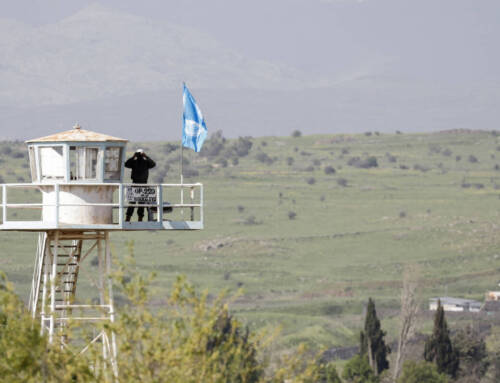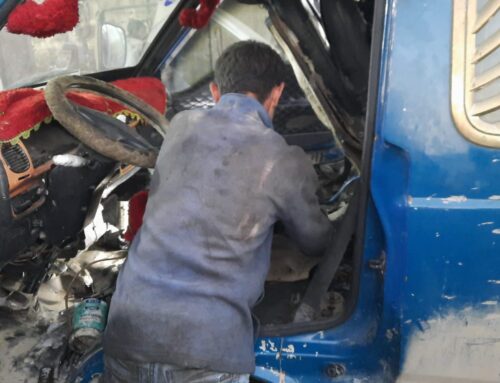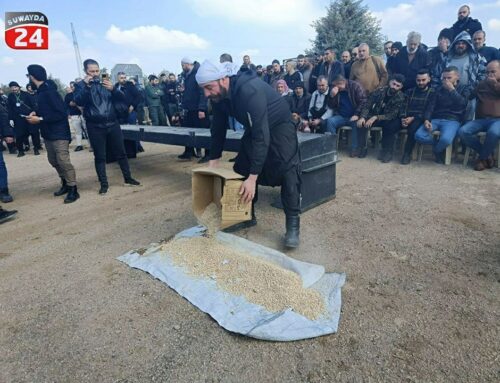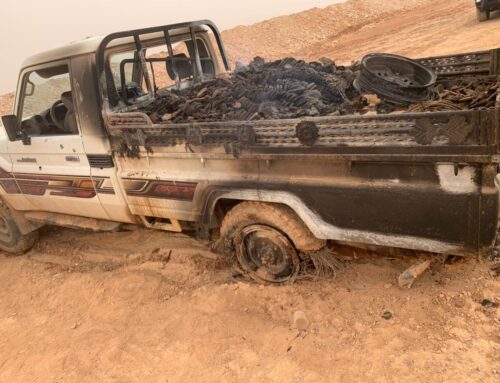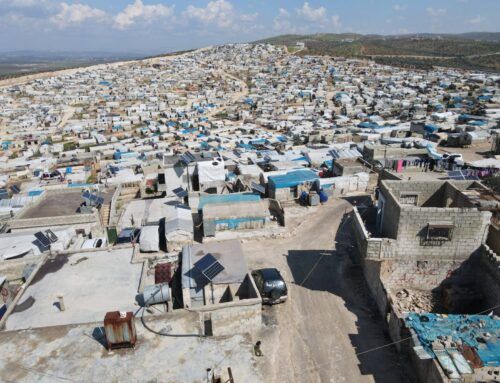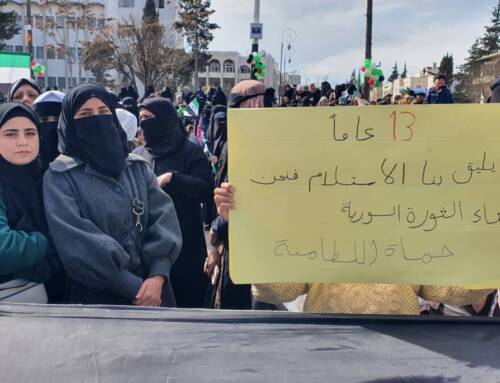Idlib province a minefield for Civil Defense personnel
A landmine of unknown origin claimed two lives in rebel-held […]
19 January 2016
A landmine of unknown origin claimed two lives in rebel-held Idlib province as Civil Defense first responders tell Syria Direct on Tuesday that they are struggling to detect and safely dispose of the devices at great personal risk “without specialized equipment.”
A “landmine blast” killed two unidentified individuals traveling in a civilian vehicle along the M5 Aleppo-Damascus highway on Monday near the south Idlib town of Maarat a-Numan, local news site AlMarra Today reported.
Idlib Civil Defense personnel responded, removing the bodies and using handheld shovels to bury debris and clear an overturned truck along with pieces of metal and wood littering the M5 following Monday’s explosion, in images the group posted on Facebook.
“We don’t have devices to dismantle the mines,” Amin Hababeh, a member of the Civil Defense in the Idlib countryside told Syria Direct on Tuesday. “When we’re informed of a mine, sometimes we take a risk and use rudimentary techniques to disarm it, endangering our lives because it could explode at any second.”
In Idlib, “mine explosions are frequent,” Rami al-Sweid, a civilian resident of the Idlib countryside told Syria Direct on Tuesday, citing seven recent incidents. Al-Sweid did not provide a specific timeframe, but landmines in the Idlib countryside killed at least five Idlib civilians last October.
Mine extractions are carried out without specialized equipment of any kind, Raed al-Saleh, the director of the Syrian Civil Defense told Syria Direct on Tuesday.

“Removal is done in a rudimentary way, without any specialized equipment, just security precautions in accordance with the experience of Civil Defense members,” al-Saleh said.
In many cases, Civil Defense personnel only become aware of the existence of a mine after it has already exploded, when they respond to extract bodies and move the wounded.
Who planted landmines in Idlib?
One Maarat a-Numan journalist laid the blame for what he called “repeated mine explosions in the area” at the feet of unnamed rebel factions operating in the Victory Army-held northern province on Tuesday.
“These mines are used in assassinations by military factions, but endanger civilians,” said Ahmad al-Tawir, a correspondent with the pro-opposition Umayya Media Center in Idlib.
“Mines are put in fertilizer containers and placed at the edge of a road, usually the Aleppo-Damascus highway,” he added.
The target of Monday’s explosion that killed two people near Maarat a-Numan was not immediately clear. Idlib province is controlled by an array of rebel military factions in the Victory Army coalition, including Jabhat a-Nusra and Ahrar a-Sham.
The mines may also be remnants of retreating regime forces.
Speaking with Syria Direct in an interview this past October, Muhammad Salloum, a resident of another south Idlib town told Syria Direct that Syrian regime forces had previously planted landmines in “farmlands close to regime checkpoints and military sites to protect the areas from rebel military operations” before losing control of the province.
Idlib resident al-Sweid claimed that “Syrian regime or Islamic State cells” could be responsible for planting mines on the M5, saying that “the Victory Army previously captured a number of individuals implicated in explosions.” Al-Sweid did not elaborate.
Beyond Idlib alone, the monitoring wing of the International Campaign to Ban Landmines reported the use of landmines and IEDs in Syria over the past five years by the regime and multiple rebel factions, including Jabhat a-Nusra and the Islamic State in a report this past November.
The threat of landmines and the destruction they leave behind gives Idlib residents one more fate to fear, al-Sweid says. “One week ago my relatives heard an explosion in the town of Has,” just southwest of Maarat a-Numan, he said. “They thought it was a missile, but it turned out to be a landmine.”



